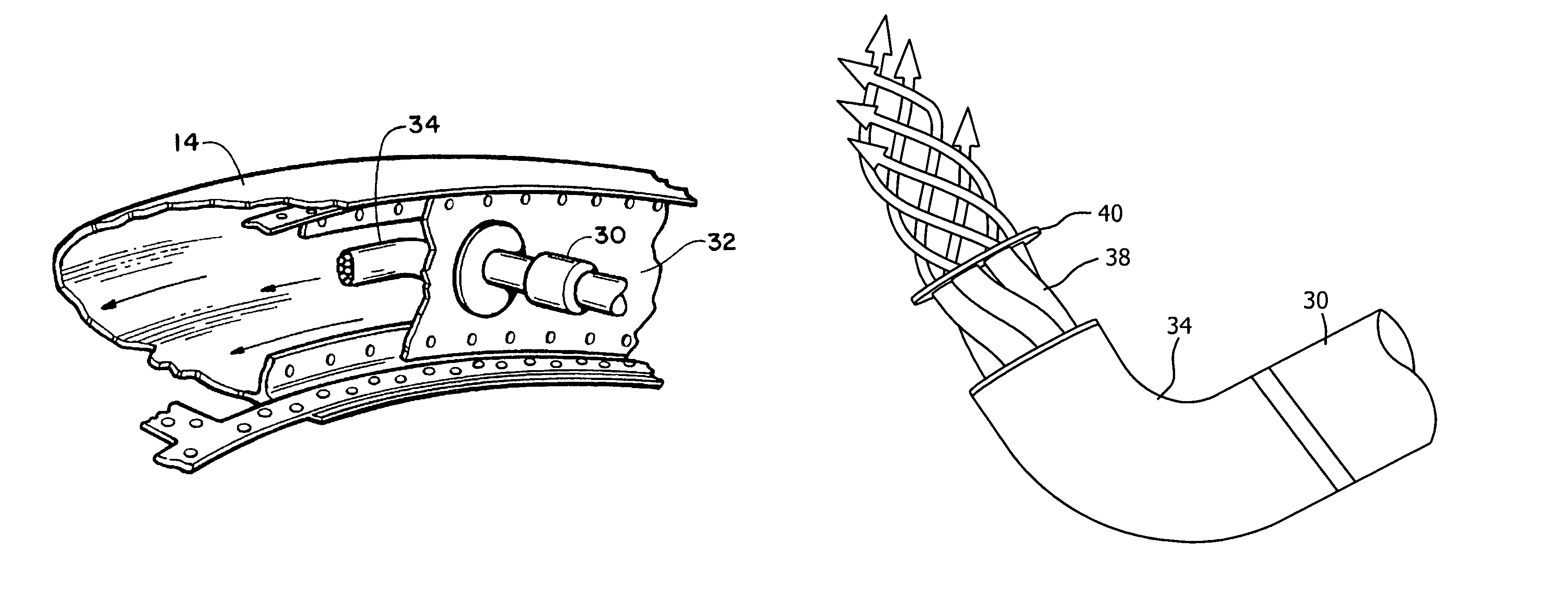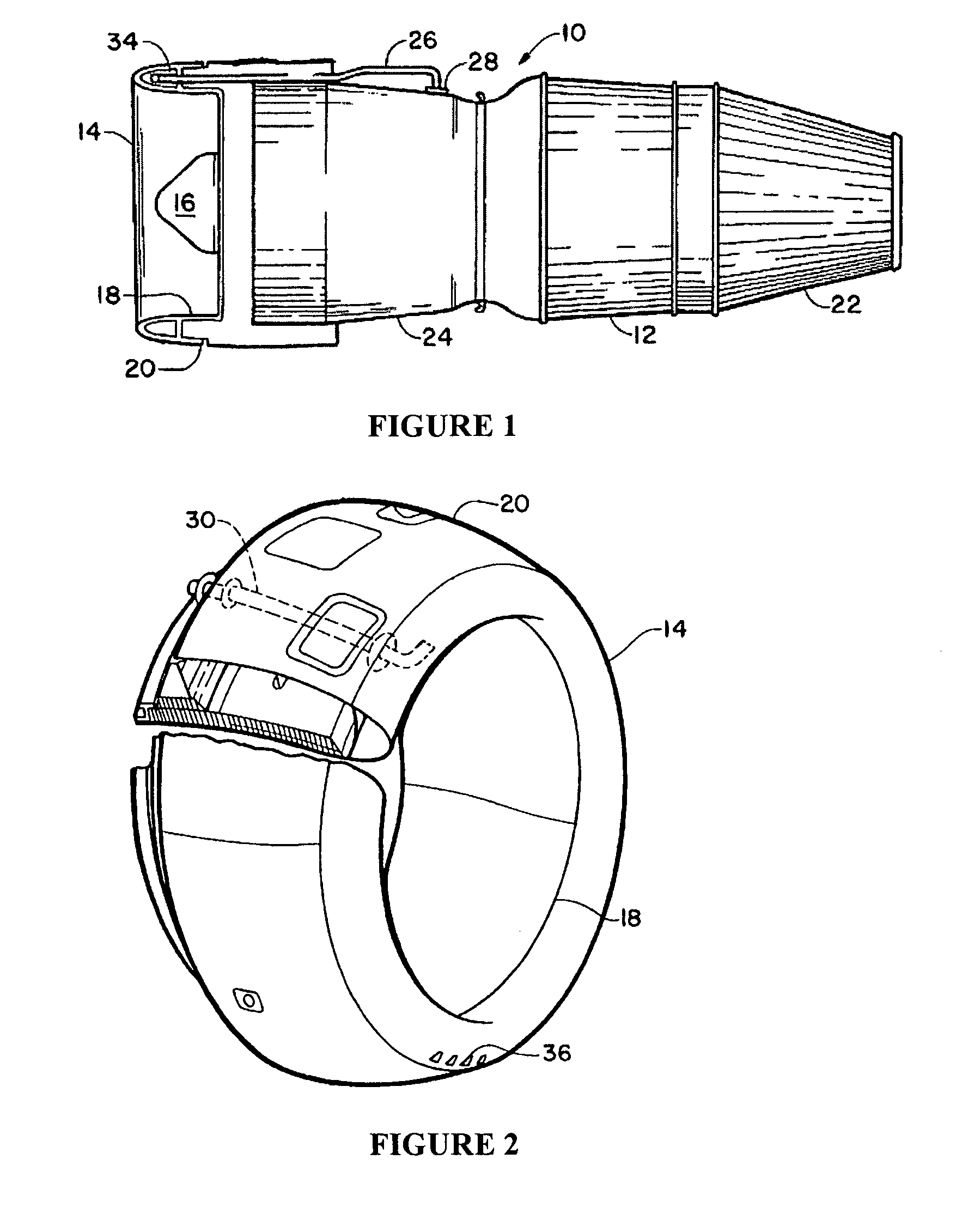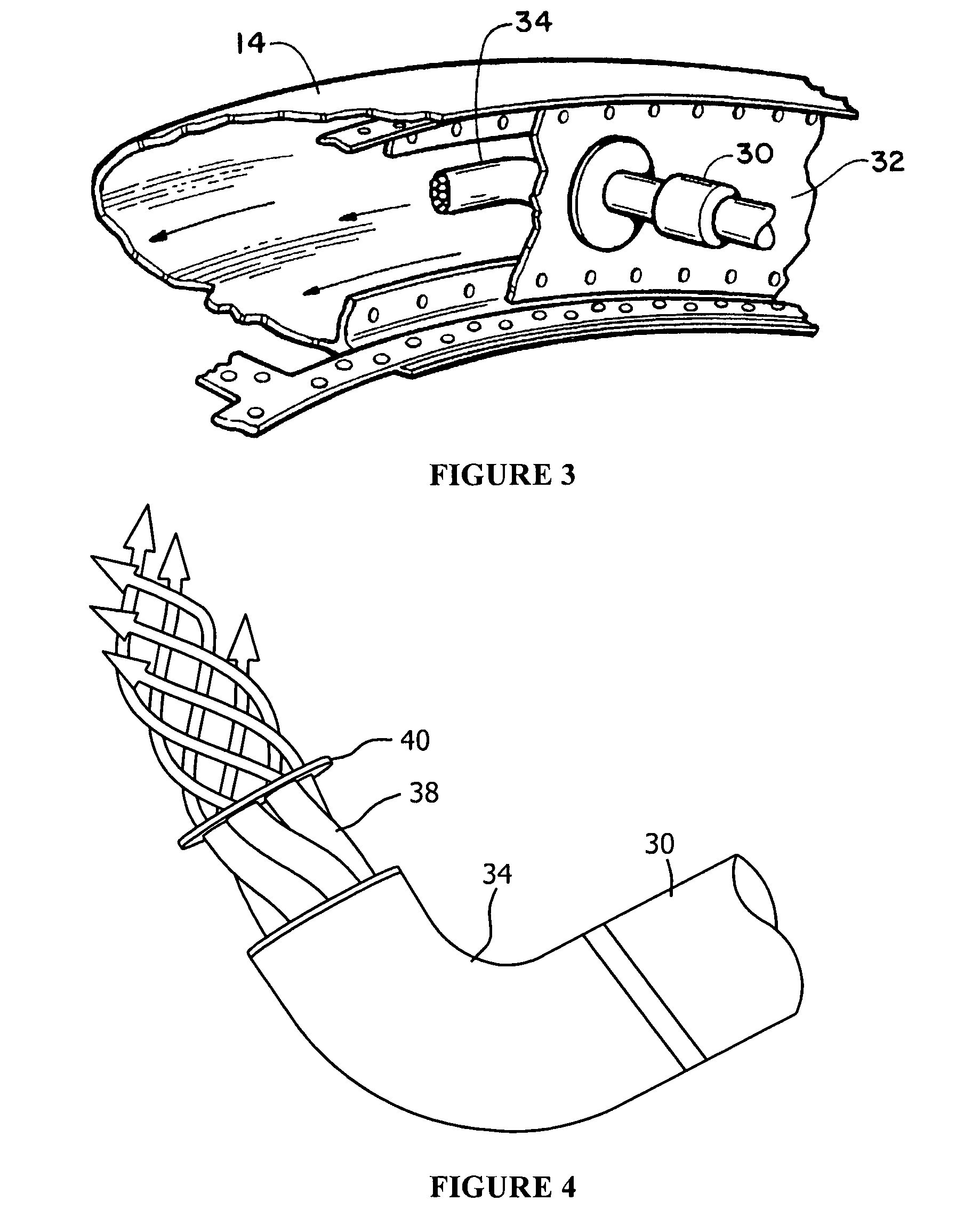Method and apparatus for aircraft anti-icing
a technology of aircraft wings and anti-icing, applied in mechanical equipment, machines/engines, transportation and packaging, etc., can solve the problems of aircraft wings, propeller air inlets, aircraft much more difficult to fly, and considerable weigh
- Summary
- Abstract
- Description
- Claims
- Application Information
AI Technical Summary
Problems solved by technology
Method used
Image
Examples
Embodiment Construction
[0017]Referring now to the drawings in detail and in particular to FIG. 1, there is seen a schematic representation of a jet turbine engine 10 of the type suitable for aircraft propulsion. The turbine engine 10 is housed within a central housing 12. Air enters the engine 10 through an air inlet section 20, between the spinner 16 of the engine and the nose lip or annular single skin housing 14 which constitutes the forward most section of the air inlet 20 of the engine nacelle, some of which components have been omitted from the figure for simplicity. Engine thrust is produced by burning incoming air and fuel within the central housing 12 and passing the hot, high pressure propulsion gases through exhaust outlet 22 and out the rear of the engine.
[0018]In flight, ice tends to form on the nose lip 14 (in addition to other aircraft components omitted for simplicity). The ice changes the geometry of the inlet area 18 between the nose lip 14 and the spinner 16, adversely affecting the req...
PUM
 Login to View More
Login to View More Abstract
Description
Claims
Application Information
 Login to View More
Login to View More - R&D
- Intellectual Property
- Life Sciences
- Materials
- Tech Scout
- Unparalleled Data Quality
- Higher Quality Content
- 60% Fewer Hallucinations
Browse by: Latest US Patents, China's latest patents, Technical Efficacy Thesaurus, Application Domain, Technology Topic, Popular Technical Reports.
© 2025 PatSnap. All rights reserved.Legal|Privacy policy|Modern Slavery Act Transparency Statement|Sitemap|About US| Contact US: help@patsnap.com



